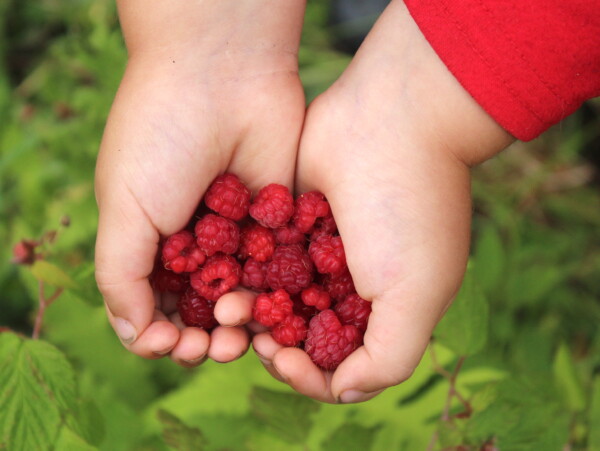Affiliate disclosure: This post may contain affiliate links. Please see our Privacy Policy.
Teaberry (Gaultheria procumbens), also known as American wintergreen, is a low-growing evergreen shrub that’s common all across North America. The whole plant, both leaves and berries, has a distinctive wintergreen flavor, and it’s generally available for harvest (with fruit hanging on the plant) year-round.
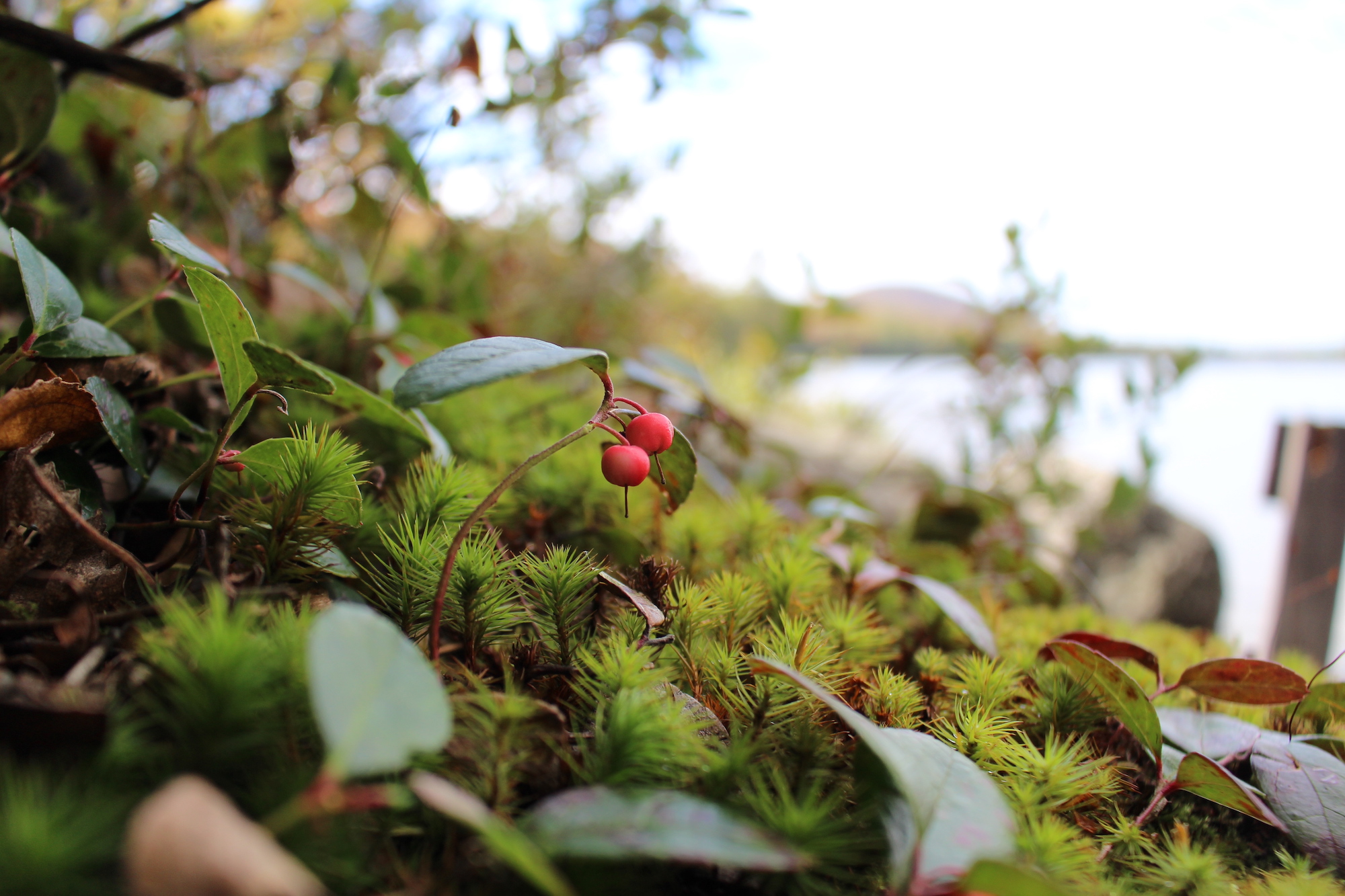
Teaberry (Gaultheria procumbens) is one of those fun wild edibles that’s easy enough to spot almost any time of year in the woods. They grow in dense carpets under evergreen canopies, especially in areas with abundant rain.
The plants themselves are also evergreen, so anytime the snow melts back mid-winter, you can forage for both teaberries and extract the delicious wintergreen flavor from their leaves.
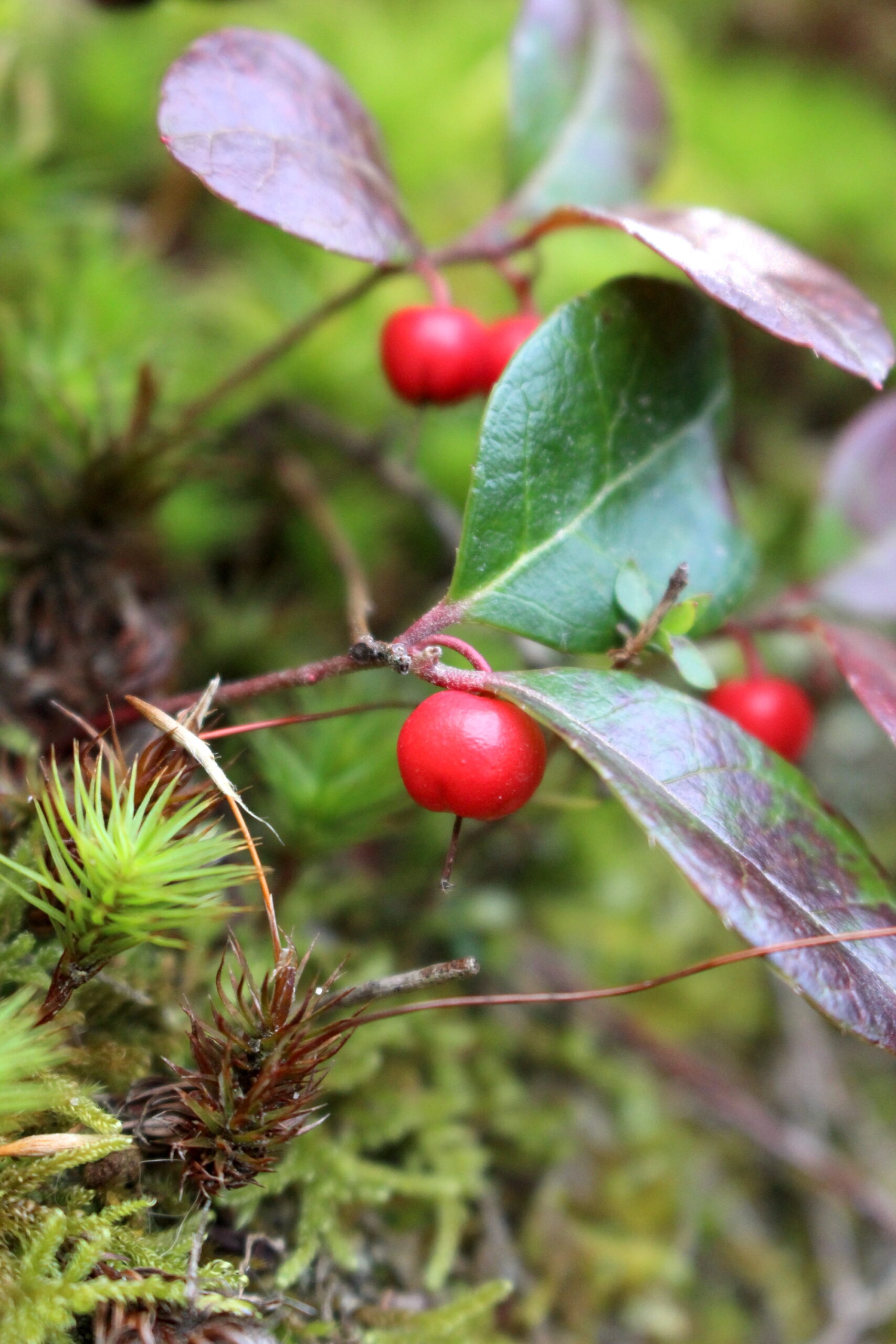
What is Teaberry?
Teaberry, Gaultheria procumbens, is also called Eastern Teaberry, Mountain Tea, Checkerberry, Boxberry, American Wintergreen, or Wintergreen. It’s a small, low-growing perennial evergreen shrub in the Ericaceae, Heath, or Heather family.
Teaberry is native to eastern North America. It grows from Newfoundland and New England south to the mountains of Georgia and west as far as Minnesota.
Teaberry is also available as an ornamental plant.
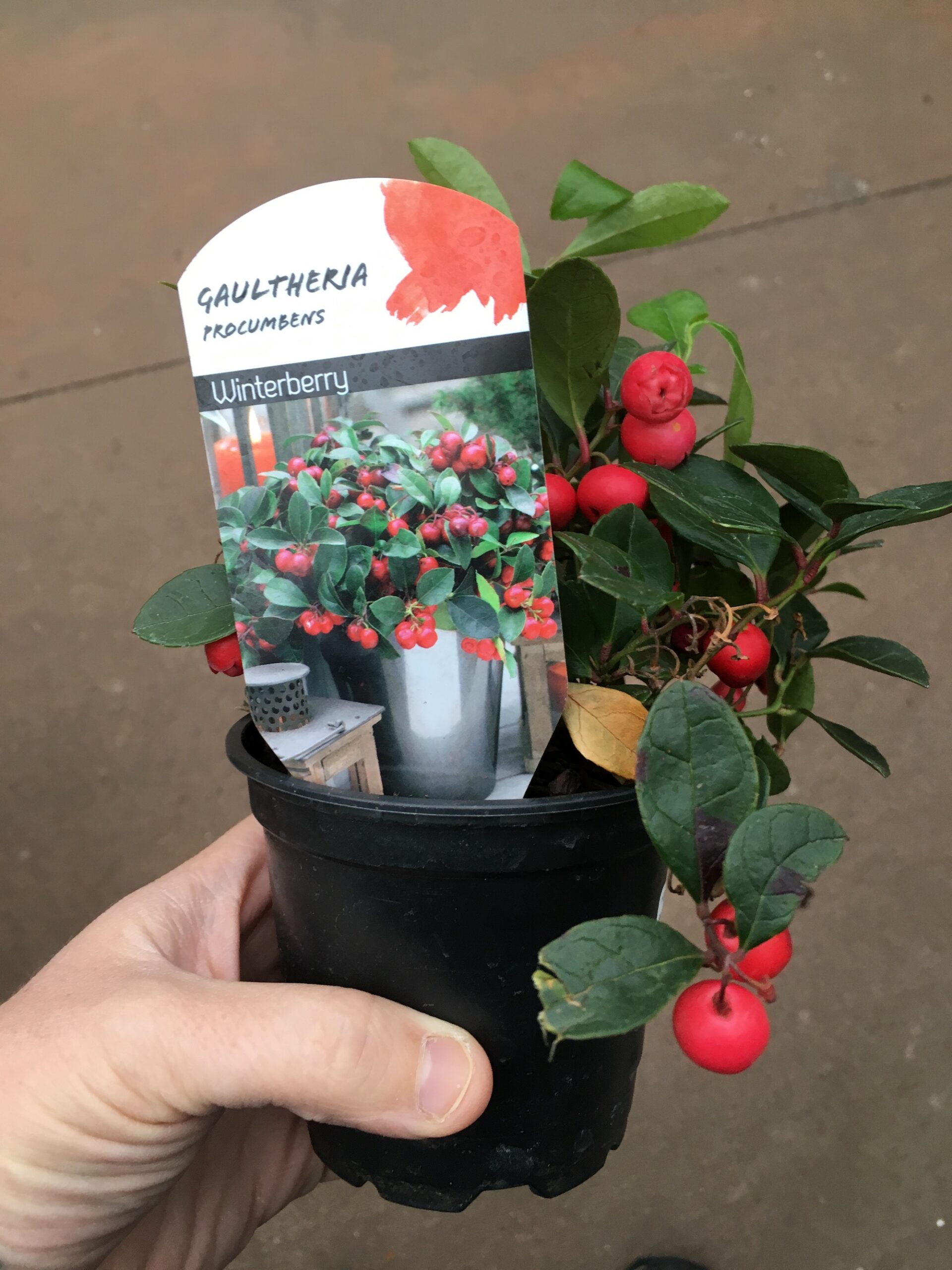
Is Teaberry Edible?
Teaberry is edible. You can eat the leaves, stems, and berries, which have a mild mint or peppermint flavor, though Teaberry isn’t in the true mint family. The berries and leaves are safe to eat raw, as an extract, fermented, or steeped as tea in small quantities.
Herbalists use Teaberry medicinally, using the berries and leaves in teas and tinctures. Alternatively, the leaves are sometimes chewed for their pain-relieving properties and then spit out. Herbalists also use Teaberry externally, creating salves and liniments.
While edible and tasty, Teaberries and their leaves should be consumed in moderation as they contain methyl salicylate, which acts similarly to aspirin and can be toxic or cause stomach upset in large doses.
It’s important to note that Teaberry essential oil contains methyl salicylate in much more concentrated amounts. One teaspoon of pure is equivalent to 21.5 adult aspirins. It doesn’t take much to overdose, and deaths from the oil’s misuse have been reported.
Methyl salicylate can also be absorbed through the skin, so use caution if applying it externally. Avoid putting Teaberry oil on any open wounds.
Keep teaberry tincture, essential oil, and other products out of reach of young children and pets.
Avoid using Teaberry if you’re allergic to aspirin, pregnant or nursing, or are avoiding aspirin for other reasons such as an upcoming surgery. Teaberry, particularly the oil, isn’t recommended for young children.
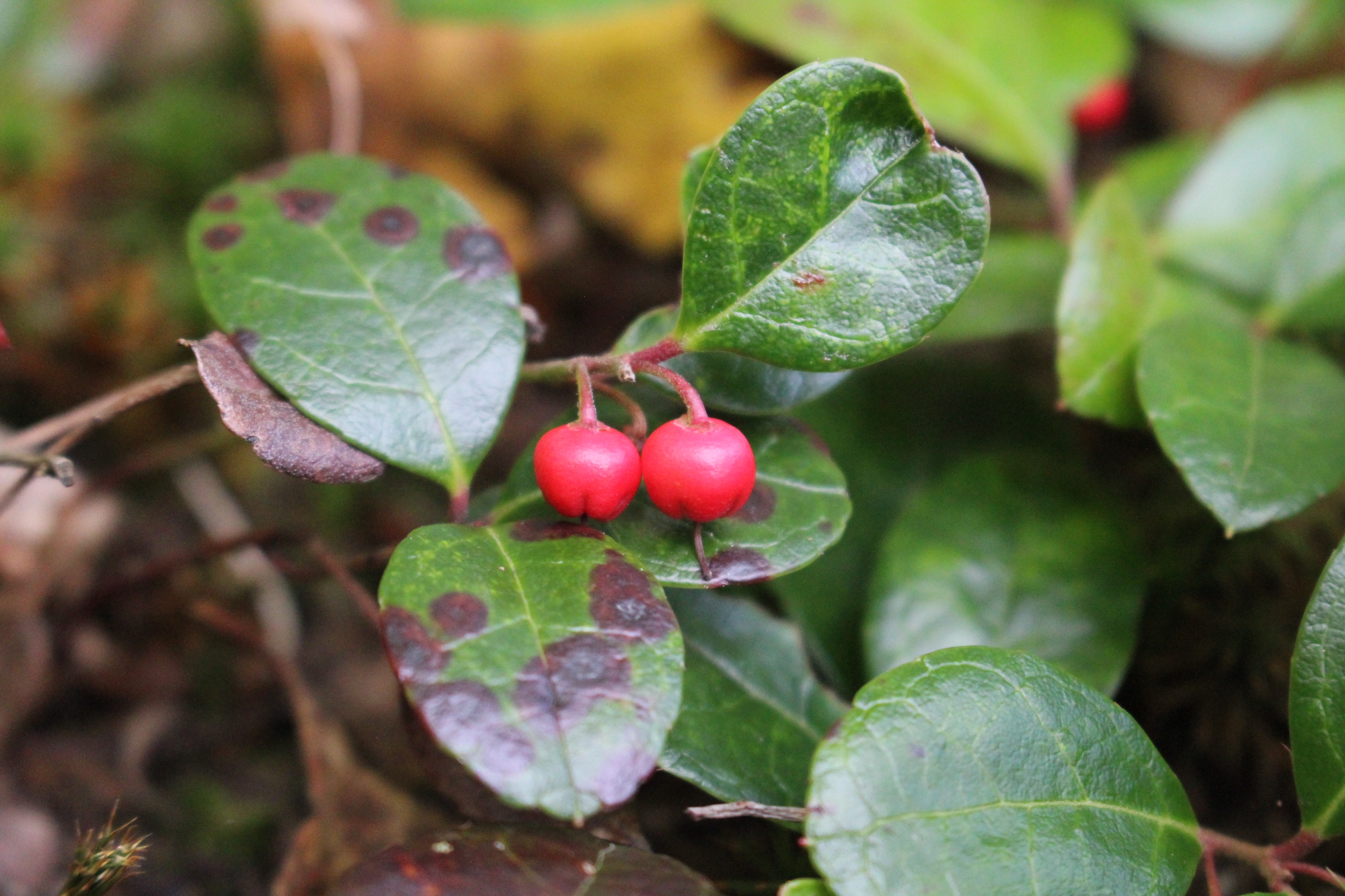
Teaberry Medicinal Benefits
Teaberry was widely used in Native American traditional medicine. Internally, Native Americans would use the plant to treat colds, headaches, stomach aches, indigestion, kidney disorders, and rheumatism. The Iroquois also used an infusion of the roots to treat tapeworms. Externally, Native Americans typically used the leaves as a poultice to treat bruises, rashes, and wounds.
Native Americans also used Teaberry to treat pain and chewed the leaves to help with breathing during hard work. French explorers quickly adopted the use of teaberry and made hot infusions with the plant.
American colonists were also quick to adopt Teaberry, which saw widespread use during the American War for Independence. During this period, colonists used Teaberry as a replacement for tea and to treat tooth pain and decay, colic, headaches, cases of cold, sore throats, skin diseases, pain, inflammation, and rheumatism.
In the past, people also used the leaves in tooth care. People would chew the leaves and then spit them out to help relieve toothaches, and an extract of the leaves was a common flavoring in toothpaste.
Today, Herbalists use the plant or small doses of Teaberry essential oil in pain-relieving salves and liniments. The methyl salicylate is absorbed through the skin and may help relieve pain from headaches, rheumatism, joint and muscle aches, sciatica, and other conditions.
Modern researchers have begun examining the unique properties of Teaberries. A 2020 study exploring the biological and chemical makeup of Teaberries found that they are “a rich source of anti-inflammatory and antioxidant salicylate glycosides and procyanidins.” These findings indicated that the berries may help treat inflammatory disorders.
Another study revealed that Teaberry may treat more than just pain and inflammation. Researchers found that Teaberry essential oil demonstrated moderate antibacterial activity against pathogenic gram-positive and gram-negative bacteria. These findings indicate that Teaberry has high therapeutic potential for preparations that require anti-inflammatory, analgesic, and antibacterial properties.

Where to Find Teaberry
You can find Teaberry growing throughout eastern North America. It grows from Newfoundland and New England south to the mountains of Georgia and west as far as Minnesota.
Teaberry is an understory species that thrives in acidic soil. It grows in the shade or partial shade of dry or evenly moist hardwood, mixed, and coniferous forests, though it typically only fruits well on edges or openings where it receives some sunlight.
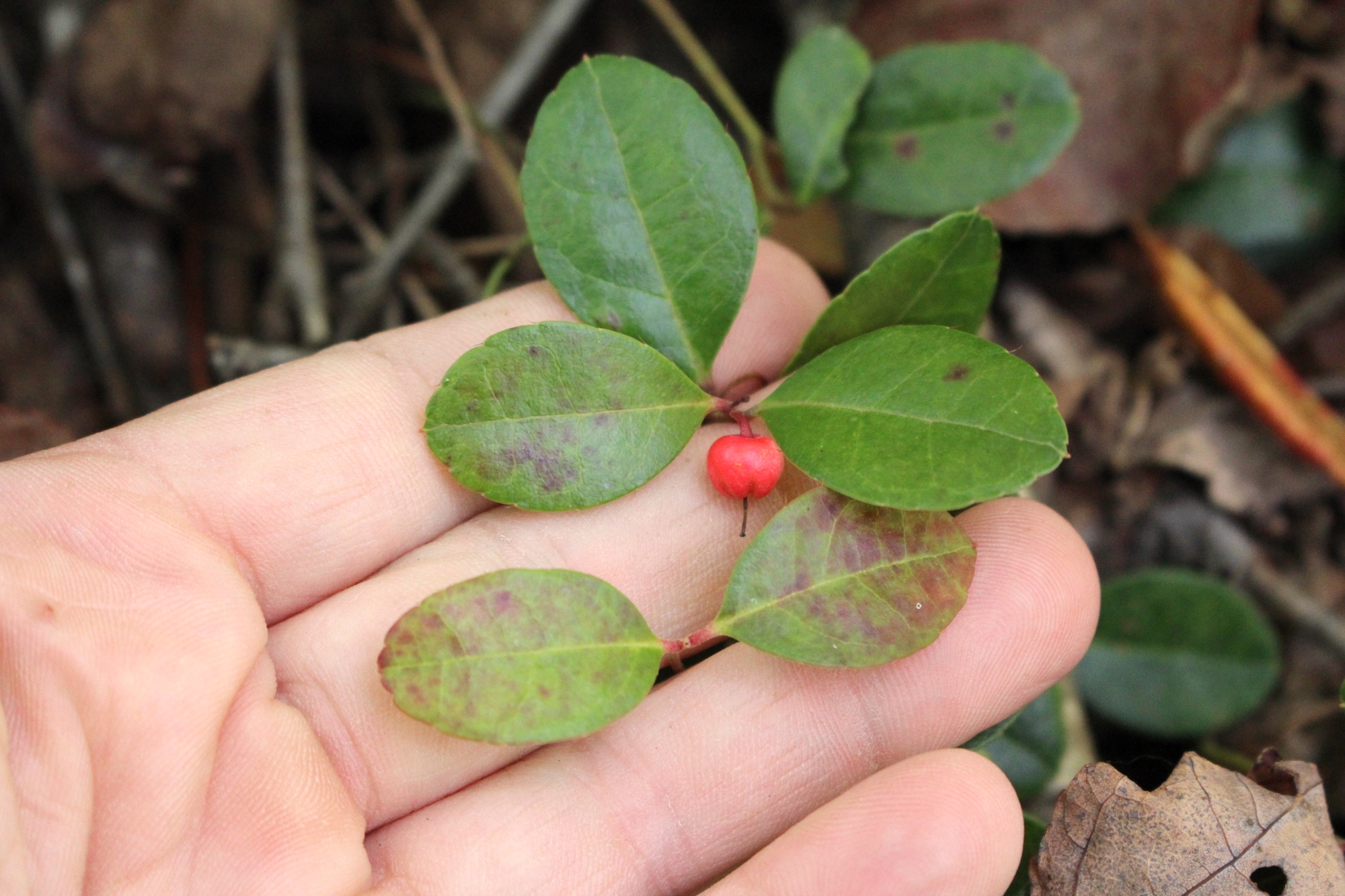
When to Find Teaberry
Teaberry is a perennial evergreen, so you can find and harvest the leaves year-round. However, if you’re looking for berries, it’s best to look in late summer or early fall. Teaberry will flower in late summer and then fruit between July and October.
However, you can sometimes find the berries much later as they persist on the plants into winter.
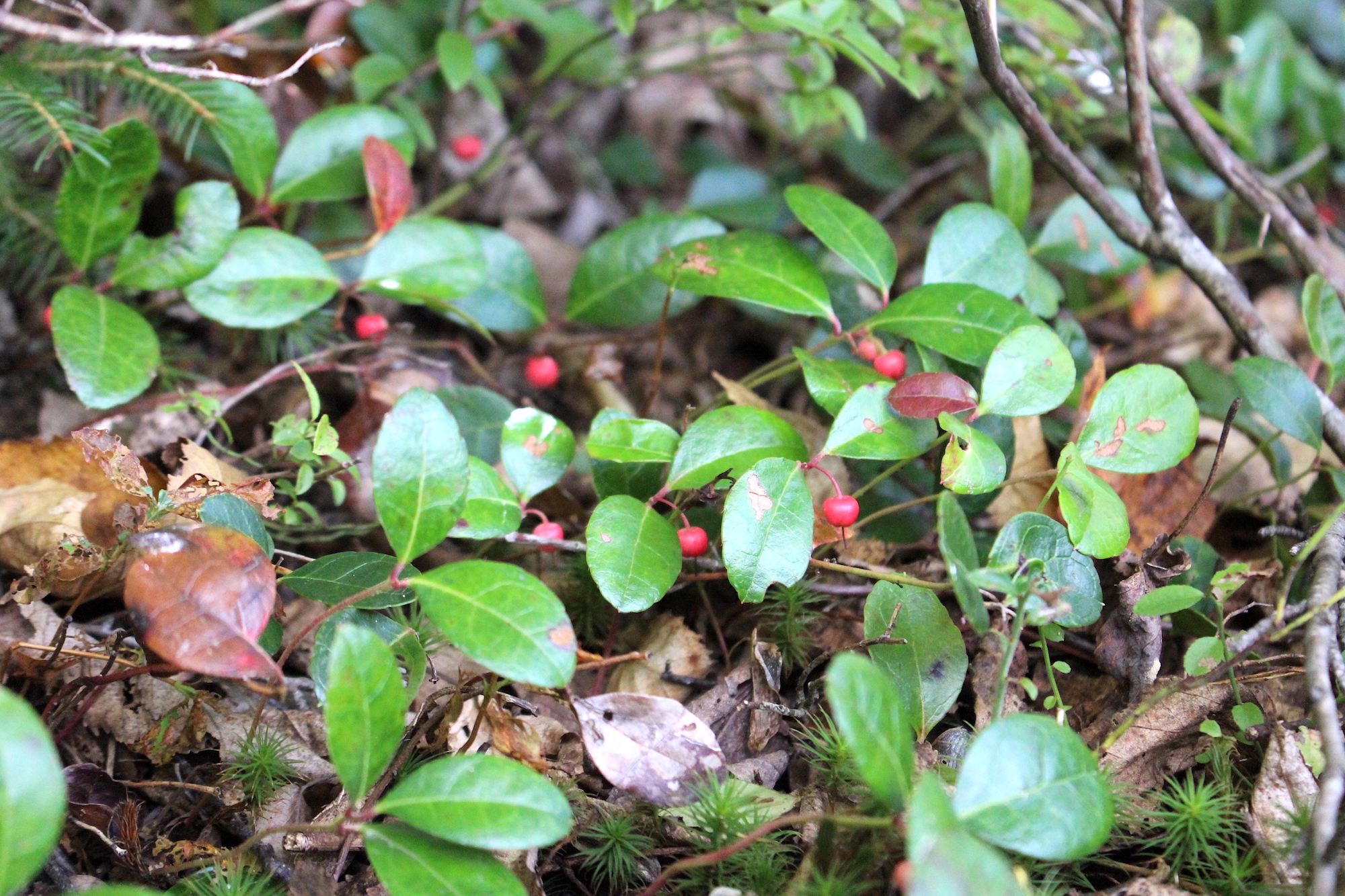
Identifying Teaberry
Teaberry is a low-growing evergreen shrub with glossy leaves. In the late summer, you may spot it with small white flowers, which give way to the noticeable red berries that sometimes persist on the plants through the winter.
It’s common to find Teaberry growing in colonies as it spreads through creeping underground rhizomes.
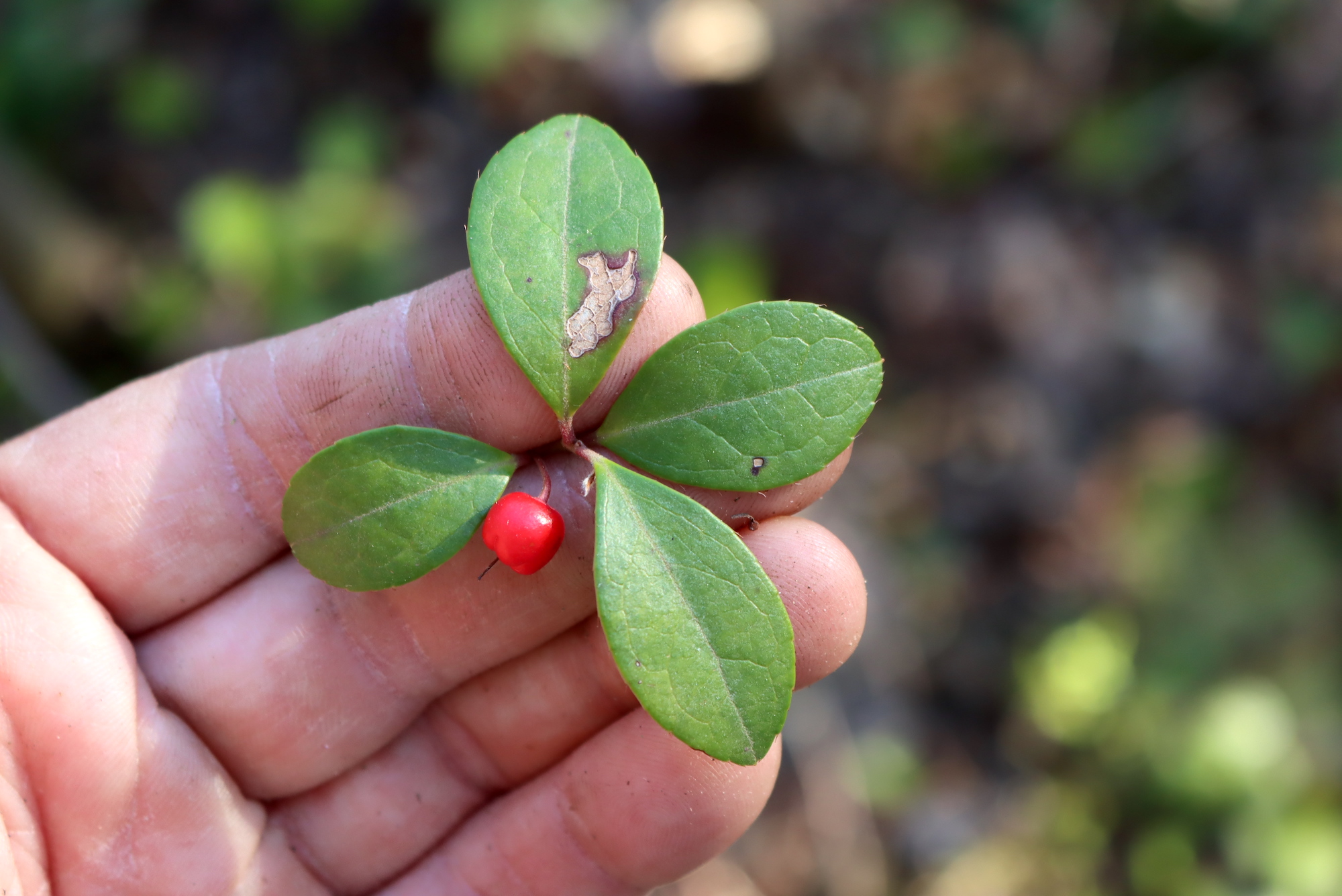
Teaberry Leaves
Teaberry has shiny medium to dark green, simple, oval to elliptic leaves. Each leaf is usually ¾ to 2 inches long and ½ to ¾ inch wide. They feature prominent central veins running from the stems to the tips and very fine teeth widely spaced on the margins. Teaberry leaves are arranged alternately.
The leaves are evergreen and persist into winter, but they sometimes turn reddish or burgundy in cold weather. The leaves have a strong, minty fragrance, especially when crushed.
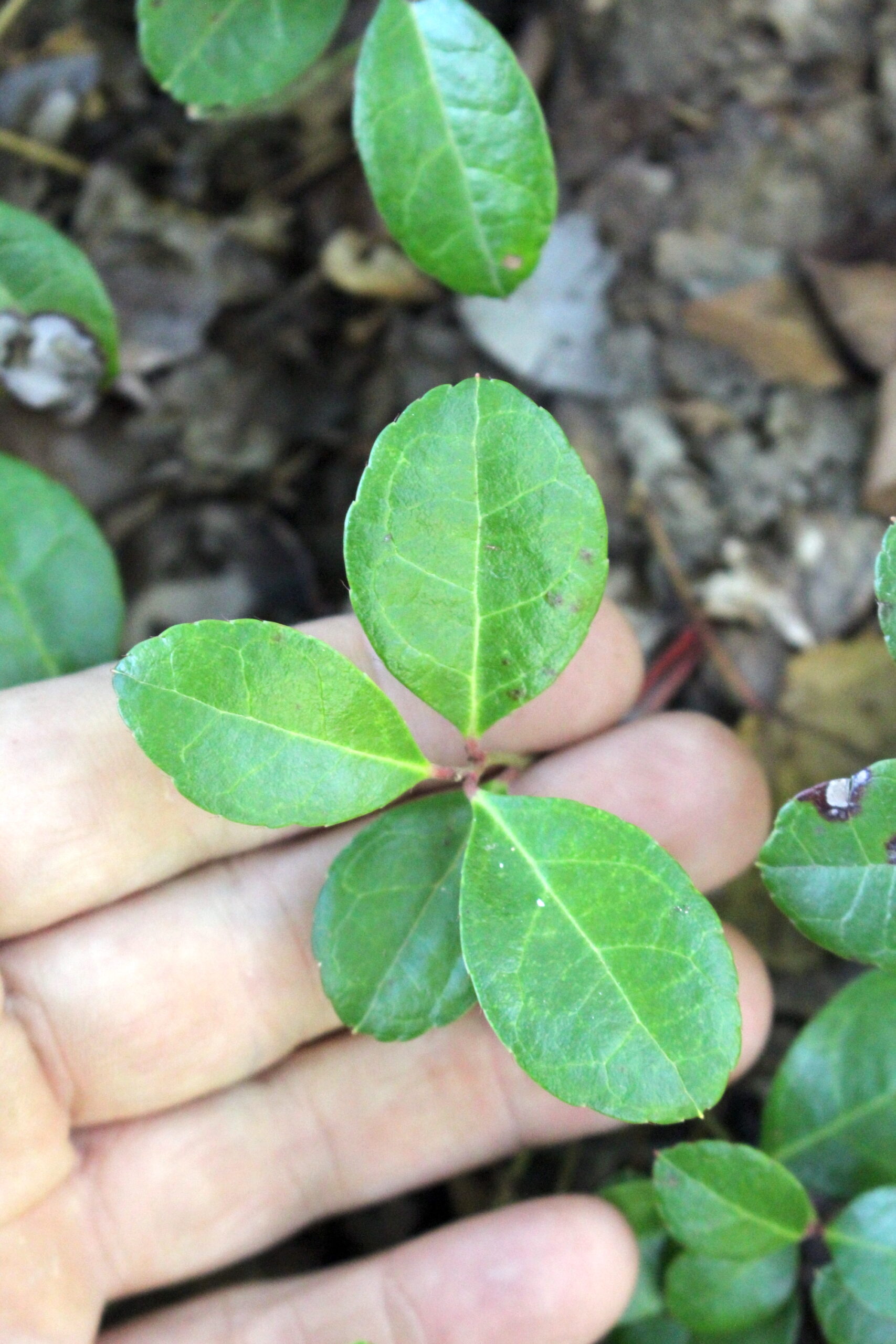
Teaberry Stems
Teaberry has green or brownish woody stems that grow just 2 to 6 inches high.
The flower stems are often reddish.
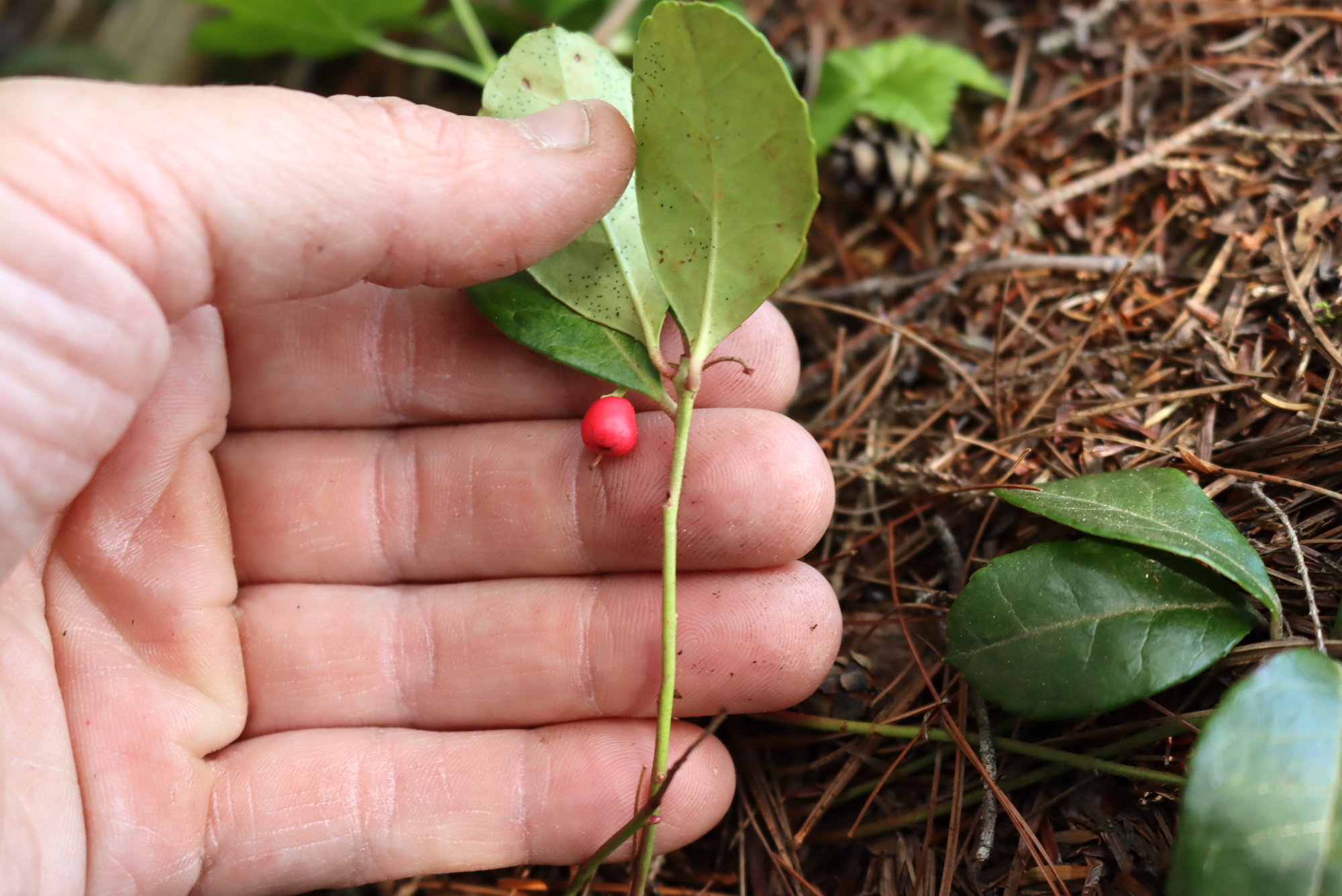
Teaberry Flowers
Teaberry has waxy, bell-shaped white or slightly pink flowers dangling beneath the leaves. The flowers typically appear in later summer, around July or August.
The small stems that hold the flowers may be green or red. Each flower is usually ¼ to ½ long and comprises five fused petals with the tips curled back.

Teaberry Fruit
Teaberry flowers give way to berry-like fruit in late summer or fall, often between July and October. The fruit begins as light green but matures to red.
The berries each have a distinct pucker on the bottom and contain many small seeds. They are often present on the plants through the winter.
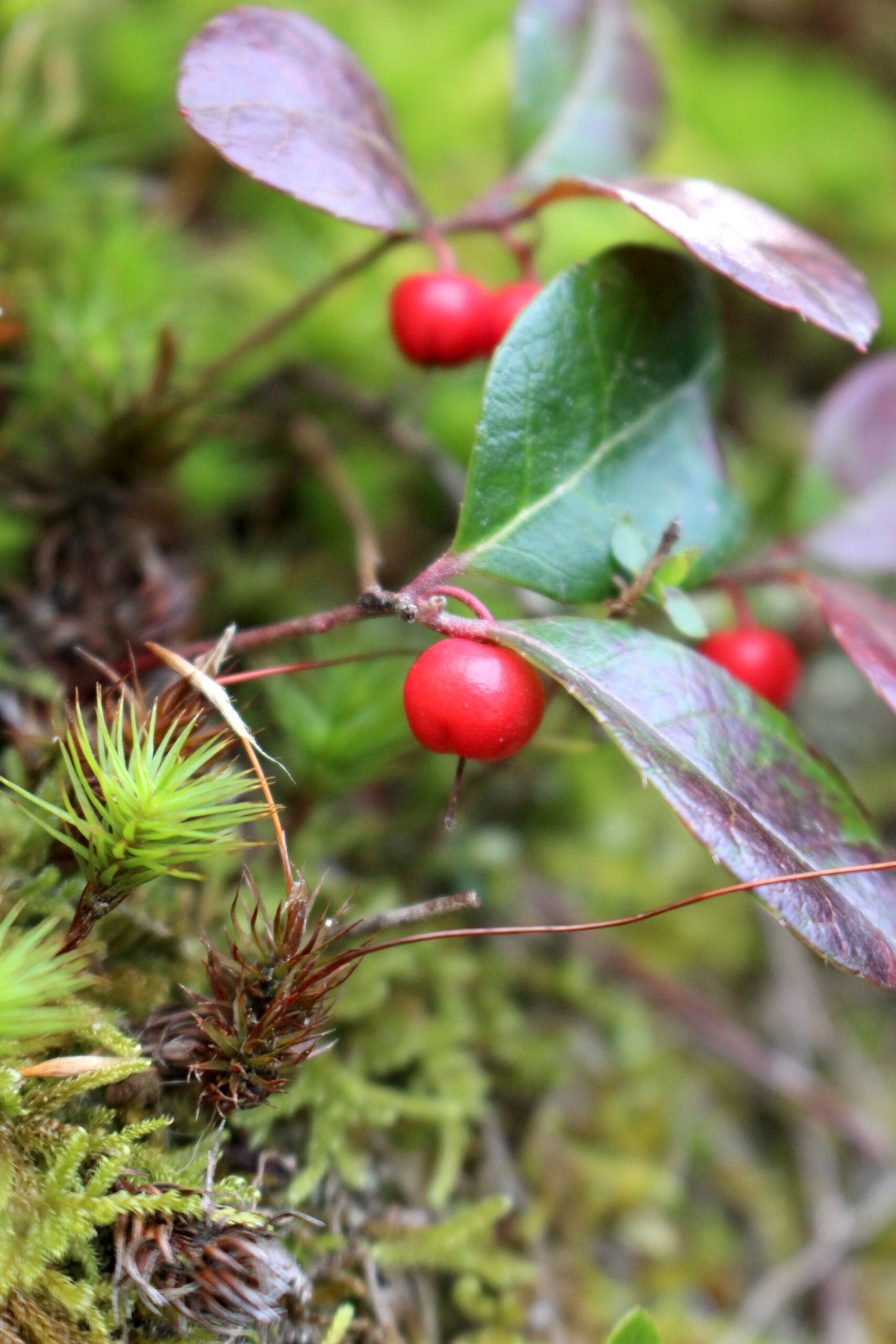
Teaberry Look-Alikes
Teaberry is sometimes mistaken for Partridge Berry (Mitchella repens). However, Partridge Berry differs in several noticeable ways:
- Partridge Berry is a creeping, non-climbing vine that rarely grows more than 2 ⅓ inches tall.
- Partridge Berry has dark green, shiny, evergreen leaves that are ovate to cordate in shape with pale yellow midribs.
- Partridgeberry leaves lack the distinctive minty fragrance.
- Partridge Berry has small, white trumpet-shaped flowers that form in pairs, each with four petals.
- Pairs of Partridge Berry flowers fuse to form a single scarlet berry featuring two bright red spots and containing eight seeds.
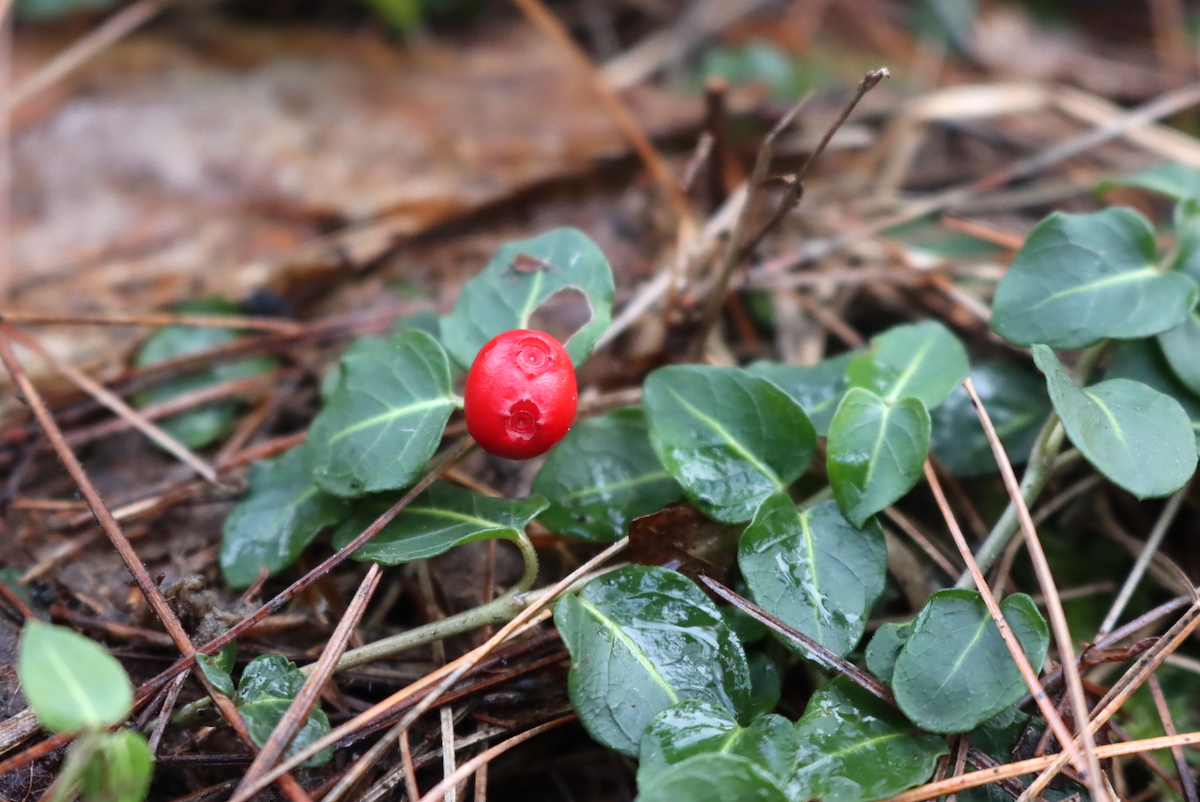
Another lookalike is Lingonberry (Vaccinium vitis-idaea). Fortunately, it too differs in a few easy-to-spot ways:
- Lingonberry grows 4 to 16 inches tall.
- Lingonberry leaves are oval with slightly wavy margins and occasionally a notched tip.
- In early summer, Lingonberry produces clusters of 3 to 10 white to pinkish urn-shaped flowers.
- The flower clusters give way to clusters of red berries.
- Lingonberry leaves lack a minty fragrance.
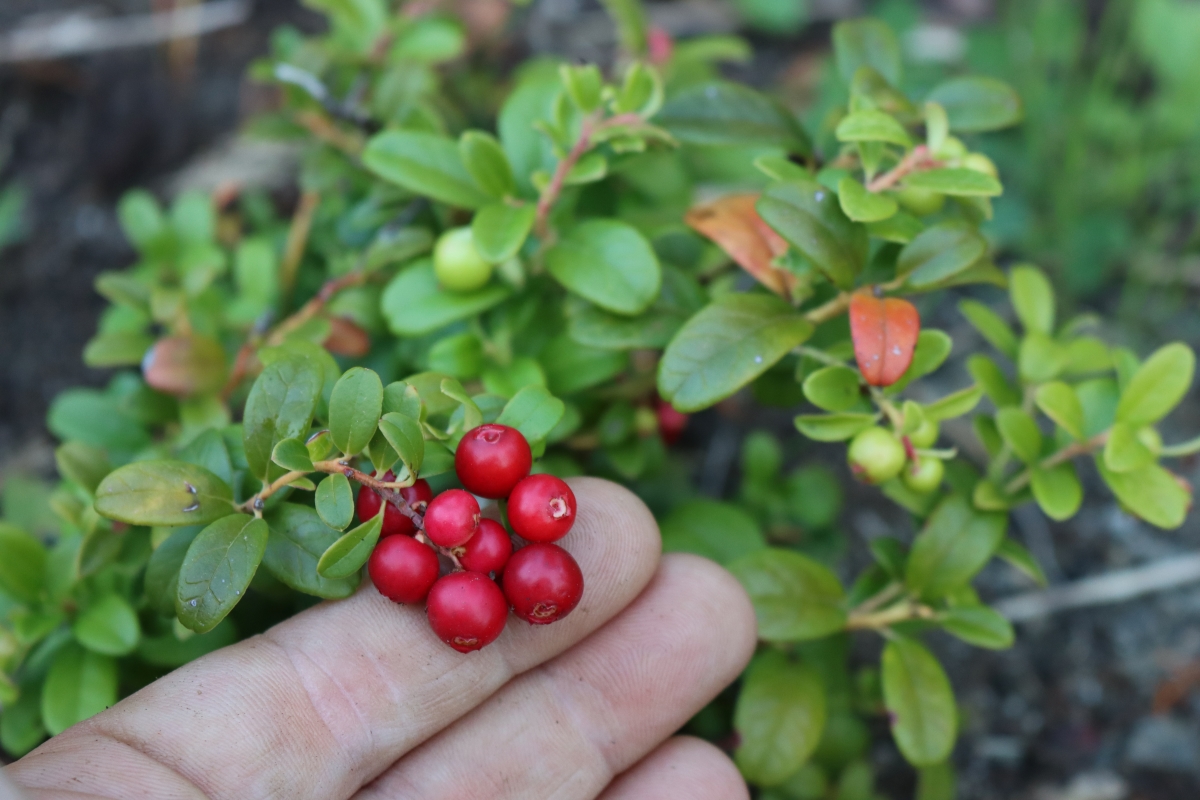
Lastly, Teaberry is sometimes mistaken for the closely related Creeping Snowberry (Gaultheria hispidula). You can distinguish them in the following ways:
- Creeping Snowberry leaves are egg-shaped and smaller, usually less than ⅜ inch in length, and have smooth edges.
- Creeping Snowberry leaves lack a minty fragrance.
- Creeping Snowberry’s white flowers appear in spring.
- Creeping Snowberry prefers moist habitats.
- Creeping Snowberry has white berries.
Ways to Use Teaberry
Teaberries have a unique flavor, but you can use them like other berries. They make a fun, breath-freshening, trailside snack! You can also use the berries to make minty pies, jams, and sauces or combine them with other berries for a less intense flavor.
You can also collect the stems, leaves, and berries and preserve them in a tincture or extract. Teaberry extract adds delicious minty flavor to homemade candies, teas, ice cream, hot chocolate, or other drinks and recipes.
If you want to preserve the berries, you can also dehydrate the fruit for later use. The Iroquois collected the berries, mashed them, formed small cakes, and dried them for later culinary or medicinal use.
Medicinally, you can use Teaberry internally and externally as long as you do so with extreme care. As an internal preparation, an infusion from the leaves stems, and berries may help with pain, inflammation, and symptoms like stomach aches, sore throats, or headaches. Externally, you can use Teaberry in pain relieving salves, lotions, and liniments to help soothe headaches, arthritis, joint pain, muscle soreness, and more.
Teaberry Recipes
- Add delicious, minty flavor to all your favorite recipes with this Wintergreen Extract recipe from Learning and Yearning.
- Make a late summer treat with this Wintergreen and Chocolate Chip Ice Cream recipe from Hunt Gather Cook.
- Impress your guests with these adorable Mini Strawberry, Rhubarb, and Wintergreen Berry Tarts from Very Vegan Gal.
- Try these hearty and wholesome Teaberry Muffins from Now What’s She Up To?
- Preserve your Wintergreen berries with this Wintergreen Jelly recipe from Forager Weekly.
Fruit Foraging Guides
Looking for more tasty edible wild fruit?
- Foraging Bunchberries
- Foraging Saskatoons (Serviceberries)
- Foraging Wild Black Cherries
- Foraging Chokecherries
- Foraging Aronia (Black Chokeberry)
- Foraging Barberry
- Foraging Rose Hips
- Foraging Rowanberry
- Foraging Autumn Olive
- Foraging Partridgeberry




